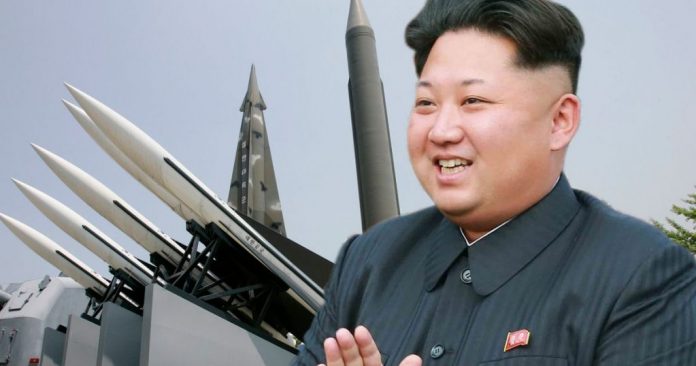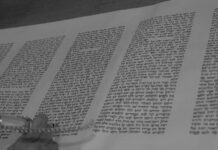
Just before North Korea launched its first intercontinental ballistic missile in 2017, scientists strapped their newest rocket engine to a test stand to see how it would perform. The liquid-fueled engine burned successfully for 200 seconds and generated enough thrust to propel a warhead halfway around the world.
Two years later, on Dec. 13, a new missile engine was lit up on the same test stand while scientists watched. This time the burn lasted 400 seconds – about seven minutes, according to an official statement.
For analysts who closely track such tests, the results were both startling and mystifying. Had North Korea built a powerful booster rocket for an ICBM? Or something entirely new? No one knew, but experts fear that the world could soon find out.
“Seven minutes,” said one U.S. official who spoke on the condition of anonymity in discussing North Korea’s capabilities, “is a long time.”
The experiment at North Korea’s Sohae test stand – one of two at the complex in the past month – has fueled speculation about the nature of the “Christmas gift” that leader Kim Jong Un promised if nuclear talks with the Trump administration remained stalled. Satellite cameras in recent weeks have spotted preparatory work at several locations where North Korea assembled or tested new missiles in the past.
But the recent surge in activity also appears to confirm something that U.S. intelligence agencies have long suspected: Despite a self-imposed moratorium on testing its most advanced missiles over the past two years, North Korea has never halted its efforts to build powerful new weapons. Indeed, Kim’s scientists appear to have used the lull to quietly improve and expand the country’s arsenal, U.S. and East Asian officials say.
U.S. analysts say the two tests at Sohae appear to reflect months of continued work on North Korea’s arsenal of potent liquid-fueled missiles, which already includes two ICBMs, the Hwasong-14 and Hwasong-15, capable of striking the United States. But the country’s scientists have demonstrated progress on other kinds of missiles as well. In the months since the failed U.S.-North Korean summit in Vietnam, Pyongyang has tested five new short- and medium-range missiles, all of which use solid propellants. Solid-fueled missiles are more mobile and easier to hide compared with similar rockets that use liquid fuel.
One of the newly unveiled additions to North Korea’s arsenal, the KN-23, is a highly maneuverable short-range missile that flies at low altitudes and is difficult to intercept. Another, the medium-range Pukguksong-3, can be launched from submarines.
“No one thinks they developed all these systems in a few months,” said Jeffrey Lewis, a weapons expert and professor at the Middlebury Institute of International Studies at Monterey, in California. Satellite photos and multiple tests – many of them publicly announced and photographed – have shown repeatedly that “North Korea’s nuclear and missile facilities kept operating during the moratoria,” he said.
“They have built up capabilities over time,” Lewis said, “and they choose to reveal them when it’s politically desirable.”
A demonstration of any of these technologies would be intended in part to express frustration over the stalled nuclear talks and to prod the Trump administration into new concessions at the negotiating table. But implicit in any new missile launch would be a larger message directed at Americans themselves, experts said.
“It would be a way of highlighting our vulnerability – to show they have the range to reach us,” said Robert Litwak, director of international security studies at the Woodrow Wilson International Center for Scholars.
The same message, delivered in the form of back-to-back ICBM tests, helped lead the United States and North Korea to the brink of crisis in 2017. Litwak said he worries that a new round of missile tests – or a Christmas surprise – could be the start of a new escalatory cycle, with an uncertain outcome.
“We do not respond well to vulnerability,” he said.
– – –
Assuming he follows through on his threat, Kim’s choice of a Christmas “gift” ultimately will be a political calculation. East Asian diplomats and some Western analysts believe he will opt for something less dramatic than an ICBM launch or nuclear weapons test, to avoid completely sabotaging U.S.-North Korea negotiations and possibly damaging ties with Chinese leader Xi Jinping.
In any case, Kim appears to have numerous options, and in recent months he has left a string of tantalizing hints.
Since the fall, amid faltering talks with the Trump administration, U.S. satellites have monitored ongoing work at two navy shipyards where North Korea keeps special barges used to test submarine-launched ballistic missiles, or SLBMs. Beginning in early December, there has been a spike in activity around a test barge at the Nampo shipyard near Pyongyang, suggesting that North Korea might be preparing to test a missile that can be launched at sea.
The last publicly announced test of an SLBM occurred just three months ago, when North Korea unveiled the Pukguksong-3. Launched from a submerged barge, it flew in a high arc, traveling 600 miles above the Earth before splashing into the sea. If it had flown in a normal trajectory, it would have crossed Japan’s northern islands and covered a distance of up to 1,200 miles, making it the most powerful solid-fueled missile built by North Korea so far.
The test revealed substantial progress with a kind of missile that military analysts regard as especially worrisome. Liquid-fueled missiles such as North Korea’s Hwasong-15 generally must be filled prior to launch, so they are liable to being spotted in advance by satellites or reconnaissance aircraft. But solid-fueled missiles can be hidden in bunkers or containers and launched with little warning. The solid-fueled Pukguksong-3 is designed to be fired from submarines that, by definition, are even harder to detect.
“They are clearly moving toward having a survivable deterrent,” or a capability that can’t be easily neutralized, said Victor Cha, a former adviser on North Korea to the George W. Bush White House and now a senior adviser to the Center for Strategic and International Studies, a Washington think tank. “Solid propellant, SLBMs and submarines would be one way of showing that they now have such a deterrent.”
North Korea has a modest fleet of Soviet-era Romeo-class submarines, some of which are being re-engineered to carry SLBMs. Pyongyang also is developing a new line of missile-capable Sinpo-class submarines with a range of up to 1,500 nautical miles. Some North Korea experts say Kim’s Christmas “gift” could be the unveiling of a submarine that could potentially launch missiles at sea without warning.
The SLBMs to be carried by those submarines also have undergone a significant upgrade. A new report about the Pukguksong-3 suggests that the missile’s solid-propelled engine is bigger and more capable than many experts initially believed. The study, by Middlebury’s Jeffrey Lewis, analyzed North Korean images to more precisely calculate the dimensions of the new SLBM as well as an earlier land-based version of the same missile. The diameter was judged to be about 13 percent wider than experts previously believed, a sign that North Korea’s engineers may have overcome a key technological barrier that limits the size of solid-fueled missiles. If so, the overall program may be “at a more advanced stage than we realized,” Lewis wrote.
“We believe North Korea could conduct a first flight-test of an intermediate- or intercontinental-range ballistic missile using solid-propellant some time in 2020,” said the analysis, according to a pre-publication draft obtained by The Washington Post. “We cannot predict whether such a test would be successful.”
– – –
But the year-end “gift” could also be of an entirely different nature – and perhaps a true surprise, analysts said. North Korean scientists have been chipping away at multiple technical barriers that hamper Kim’s ability to strike the United States with a nuclear warhead, analysts said, and the communist leader may decide to showcase a breakthrough.
The two missile-engine tests at Sohae – a facility that Kim had pledged to dismantle – sparked speculation that North Korea is preparing to unveil a more powerful, multistage rocket to launch satellites into space.
Other experts, citing the unusual seven-minute burn time during the Dec. 13 experiment, theorized that Pyongyang is working on an improved reentry vehicle to sit atop one of the new ICBMs. To reach the United States, the missile and its nuclear warhead would have to survive intense heat as it slices through the upper atmosphere. Perhaps the North Koreans were using a rocket engine’s fiery exhaust to simulate reentry conditions, analysts said.
Kim could also demonstrate an ability to use decoys to fool the expensive antimissile systems built by the United States to intercept incoming warheads, said Vann Van Diepen, a top nonproliferation official in the Bush and Obama administrations. The decoys, called “penetration aids” or “penaids,” could include inflatable balloons or clouds of metal chaff that can confuse missile-tracking radars on land.
The Kim regime has not yet demonstrated that it has such devices, but “it would be consistent with North Korea’s historical missile development philosophy to deploy at least simple penaids” on its long-range missiles, Van Diepen wrote in an essay published by 38 North, a website that serves as a forum for North Korea analysts.
Even a more modest demonstration – a new test of one of North Korea’s older ICBMs, for example – would make a political statement by breaking the self-imposed freeze. But Van Diepen said it would be a mistake to rule out the possibility of other, bigger surprises if Kim resumes an active testing program in the months ahead.
“A big unknown is how much technical help they got from others, but they’ve been able to do an awful lot on their own,” he said. “There’s a whole cottage industry of people who underestimated North Korea.”
(c) 2019, The Washington Post · Joby Warrick
{Matzav.com}












Matzav should put the names of the media in the front page so we should immediately realize that it’s coming from fake news and not bother clicking on it.